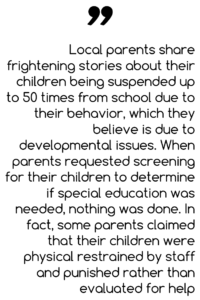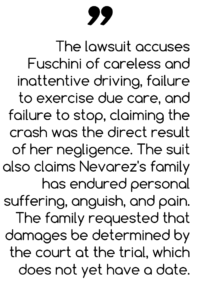Who would understand the implications of a “Death with Dignity,” or physician-assisted death, option more thoroughly than physicians? Dr. Roger M. Kligler and Dr. Alan Steinbach have long believed in and advocated for a patient’s right to obtain medication from their doctor in order to avoid extreme suffering due to terminal illness. As a physician, Dr. Kligler has has witnessed his own patients’ quality of life deteriorate during the final stages of cancer. Now that he is dealing with stage 4 metastatic prostate cancer, the fight is personal. He has expressed the desire to simply have the option to self-administer the lethal medication if his pain and suffering become unbearable without it resulting in the prosecution of his doctors.
Is a lawsuit the best way to move forward?
Unfortunately, Dr. Kligler may not have the time to wait for the next legislative session before receiving an answer. Ideally, a bill would pass successfully through the state house and senate in order to become a state law. Representative Louis Kafka (D-Stoughton) has filed at least four previous versions of an assisted death bill, beginning in 2011. He notes that each bill has garnered more support than the prior version even though the bills have not yet made it out of committee. The latest Compassionate Care for the Terminally Ill Act was co-sponsored by 39 Massachusetts lawmakers was filed in January 2015. The Joint Committee on Public Health essentially shut the bill down in June of 2016 by suggesting it be  reviewed further.
reviewed further.
Another option that would allow such a law to take effect would be a ballot initiative. The problem for Dr. Kligler is once again time. Because of Massachusetts ballot initiative rules, the next time a Death with Dignity bill can be presented to the public for a vote is in 2018. Although nearly 60% of the Commonwealth was in favor of a patient’s right to choose physician-assisted death, the 2012 ballot initiative was defeated 51% to 49%.
At this point, Dr. Kligler’s only hope at gaining the dignity to choose when and how he dies is if the court steps in to clarify the issue. On a positive note, there is not a law in Massachusetts that prohibits doctors from providing assistance to terminally ill patients who are ready to end their own lives. Compassion & Choices is a national organization that helped file the lawsuit on behalf of Kligler and Steinbach. The lawsuit seeks to determine what is actually allowed and what is explicitly forbidden according to current laws. After a statement made in a separate case in which justices seemed to acknowledge that a mature adult suffering from a terminal illness who may seek support, comfort and eventually assistance in ending their own life is a unique situation worthy of consideration.



 directed them at Bieker. While Bieker may have thought this was help arriving, the officer instead ordered Bieker and his boat to get off of the water.
directed them at Bieker. While Bieker may have thought this was help arriving, the officer instead ordered Bieker and his boat to get off of the water.
 Lead exposure in children can lead to irreversible brain damage, including learning disabilities and behavioral problems. The parents behind the law suit claim that the school is lacking resources to deal with children with special needs, and fear that the dangerous exposure to lead over the past few years has increased the number of children in need of special education.
Lead exposure in children can lead to irreversible brain damage, including learning disabilities and behavioral problems. The parents behind the law suit claim that the school is lacking resources to deal with children with special needs, and fear that the dangerous exposure to lead over the past few years has increased the number of children in need of special education.
 time unable to work.
time unable to work.
 manslaughter charge is a fourth-degree felony, and she was given three and a half years in prison.
manslaughter charge is a fourth-degree felony, and she was given three and a half years in prison.
 Arguments For JASTA
Arguments For JASTA
 The chicken producers deny any collusion. National Chicken Council President Mike Brown suggested in an October 2014 article that the underlying reason for higher chicken prices has been an increase in the price of feed caused by the diversion of corn to produce ethanol.
The chicken producers deny any collusion. National Chicken Council President Mike Brown suggested in an October 2014 article that the underlying reason for higher chicken prices has been an increase in the price of feed caused by the diversion of corn to produce ethanol. 
 Iowa law stipulates that anyone who spreads obscene materials to minors has committed a crime known as sexual exploitation. Although in this case, and others like it in Iowa, the minor shared the photos, it is still considered to be either a Class C or Class D felony offense. The teenaged girl and her family assert that this is perhaps bad judgment but certainly not criminal. They have filed a lawsuit to prevent the Marion County Attorney from charging the girl with sexual exploitation.
Iowa law stipulates that anyone who spreads obscene materials to minors has committed a crime known as sexual exploitation. Although in this case, and others like it in Iowa, the minor shared the photos, it is still considered to be either a Class C or Class D felony offense. The teenaged girl and her family assert that this is perhaps bad judgment but certainly not criminal. They have filed a lawsuit to prevent the Marion County Attorney from charging the girl with sexual exploitation.
 Exxon is claiming they will fight these claims in the lawsuit and the company spokesperson,
Exxon is claiming they will fight these claims in the lawsuit and the company spokesperson, 
